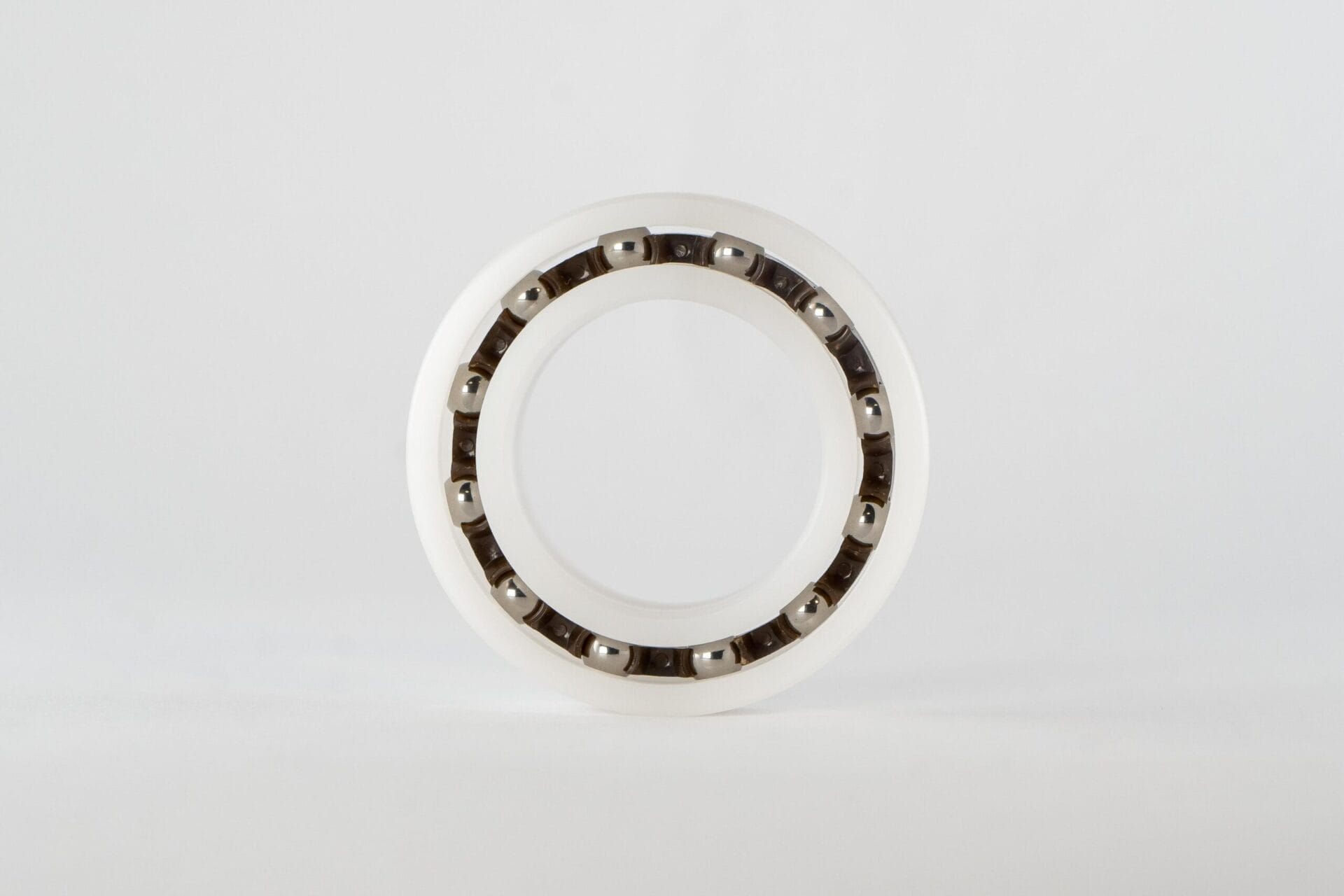~ Bearings in aerospace and defense support sustainability and innovation ~
According to Deloitte, “the demand for sustainability, product innovations, and wartime defense is expected to result in rapid technological evolution” in the aerospace and defence (A&D) industry”. Innovations like electric propulsion systems and more precise manufacturing will be crucial. Here, Chris Johnson, managing director at specialist bearing supplier SMB Bearings, explains why industrial bearings will play an integral role in this evolution.
In the pursuit of net-zero CO2 emissions by 2050, the aerospace and defense (A&D) industry is undergoing a transformative shift towards sustainability that is “fuelling product innovations,” according to Deloitte’s 2024 aerospace and defense industry outlook report. This drive includes A&D companies’ targets to reduce greenhouse gas emissions, water waste and energy use to meet their interim 2030 sustainability goals.
Innovative designs and sustainable propulsion technologies are at the forefront of this evolution. For instance, Deloitte’s report cites a prediction by the International Air Transport Association (IATA) that sustainable aviation fuel could contribute 62 per cent of the carbon mitigation required by 2050. The demand for reduced and zero-emission aviation is also propelling the growth of electric, hybrid, hydrogen, and solar-powered propulsion technologies.
Advanced manufacturing and materials development will be crucial to these innovations — and industrial bearings lie at the heart of these advancements. Bearings will play a pivotal role in supporting new product introductions and sustainability initiatives in the A&D industry, contributing significantly to efficient propulsion systems, advanced manufacturing processes and the digital transformation through predictive maintenance. Let’s examine how.

Enhanced energy efficiency
Industrial bearings facilitate motion and reduce friction and are integral in machinery used for manufacturing processes ranging from the production of aircraft structural components to intricate parts of propulsion systems. In the context of environmentally friendly aircraft components, precision becomes even more critical.
For instance, friction is a major adversary to efficiency, causing wear and tear on engine components. By incorporating high-performance bearings, A&D companies can effectively mitigate frictional losses, contributing to enhanced energy efficiency. This reduction in friction translates to more streamlined and efficient engine operations, aligning with the industry’s broader sustainability goals.
A specific example is variable pitch propellers, which support improved aerodynamics and fuel efficiency. Precision-engineered bearings support their optimal functioning, enhancing overall aircraft performance, reducing environmental impact through decreased fuel consumption and emissions, and thereby promoting sustainability in aviation.
Companies in the A&D sector are actively exploring advanced materials and manufacturing methods to create lightweight, energy-efficient, and sustainable components. Bearings contribute to the precision of these manufacturing processes by ensuring accurate alignment and movement of machinery, which is vital for creating components that meet stringent quality standards.
Another crucial area is digital transformation and predictive maintenance. Smart bearings with embedded sensors enable real-time monitoring of engine performance, facilitating predictive maintenance and preventing failures. This proactive approach reduces downtime, increases reliability, and minimises resource consumption, making aircraft propulsion systems more sustainable, efficient, and economically viable in the long run.

Withstanding harsh conditions
The choice of industrial bearings is crucial for aerospace design, where specifications demand lightweight, low-friction, and long-lasting components. Bearings come in various types, each tailored to specific needs — let’s look at some of the different options.
Traditional metal bearings, often made of steel and stainless steel have been the go-to-choice for many applications. While durable and reliable, they may not be the most suitable for weight-sensitive aerospace components.
Instead, one of the most promising advancements in bearing technology is the use of composites. A plastic bearing, for instance, is five times lighter than its steel counterpart. Reinforced composite bearings can deliver enhanced technical performance while using less material, making them ideal for various aerospace applications.
Some plastic composites used in bearings are resistant to heat, UV exposure, and harsh conditions. This resistance is crucial, especially when aircraft must navigate through extreme turbulent winds. Modern reinforced composite bearings stay intact, avoiding moisture absorption and outperforming metal counterparts in harsh environments. This significantly increases the lifespan of the aircraft and mitigates the need for costly repairs caused by corrosion.
For smaller and space-limited aerospace projects, such as those found in the reclining elements of seats, EZO thin section bearings manufactured by Sapporo Precision in Japan are recommended. These bearings are known for their consistent quality, allowing design engineers to produce dependable and reliable products and systems for the green aerospace mission.
Sustainability in the skies
Bearings are used across the entire aircraft, including aircraft wing systems, flight controls, cockpit controls, and aircraft interiors, to name just a few. Design engineers are working with very ambitious specifications, which rely heavily on ultra-low friction, lightweight, compact, and long-lasting bearings.
Even the miniature bearings in the aircraft interior, from the seats, bins, latches, and hinge points, require careful consideration, as every gram counts. While some components may be the same as those used in previous airplane models, others may need a rethink. Bearing material and lubrication are two of the most important factors in the selection process, impacting bearing speed, load capabilities, and long-term maintenance requirements.
It’s clear that industrial bearings will play an integral role in supporting the A&D industry’s pursuit of sustainability — from enhancing propulsion efficiency to facilitating precision manufacturing. Manufacturers mustn’t overlook their importance achieving net-zero CO2 emissions by 2050.
For more information on EZO thin section bearings, visit SMB Bearings’ website.






